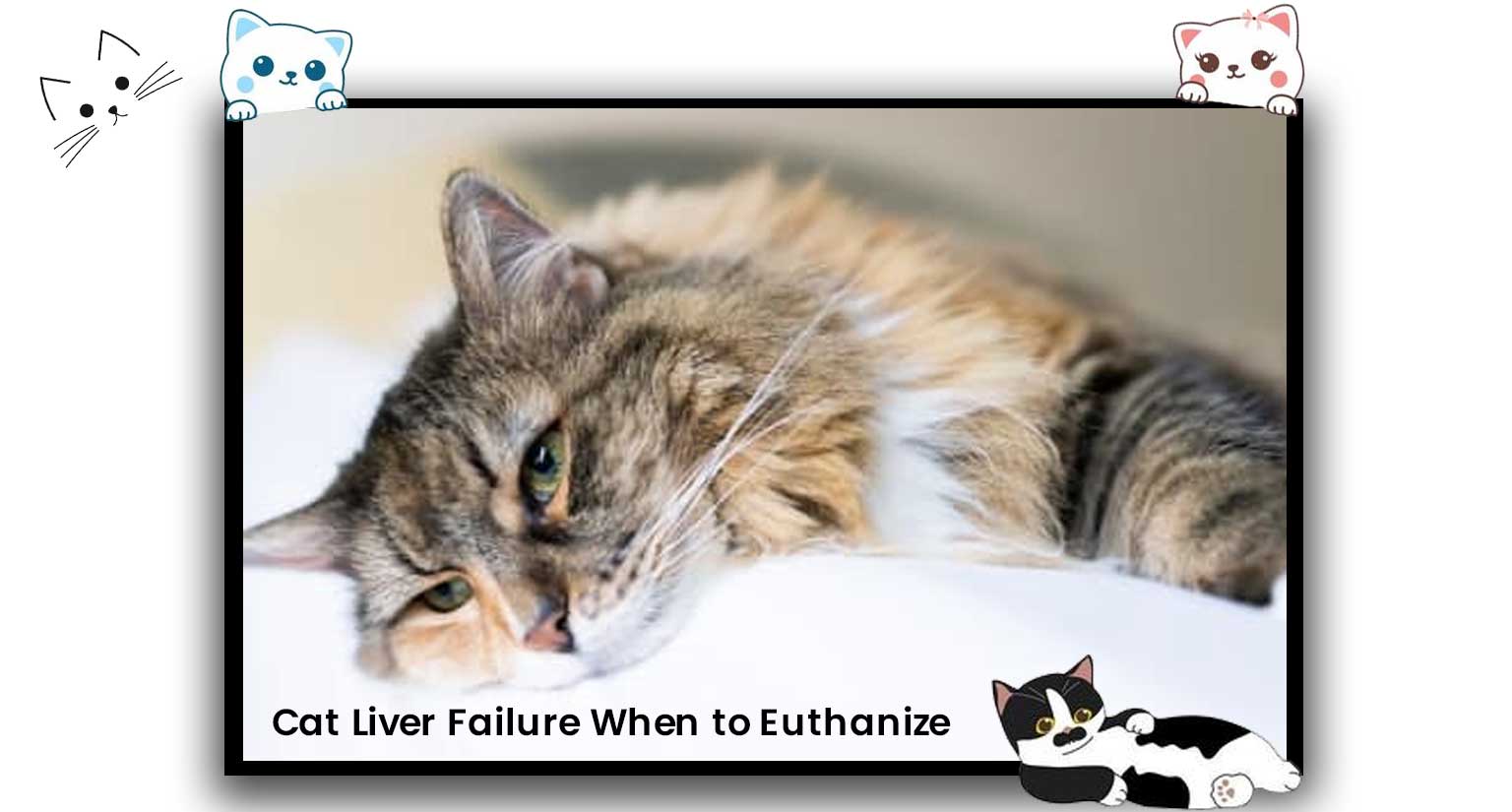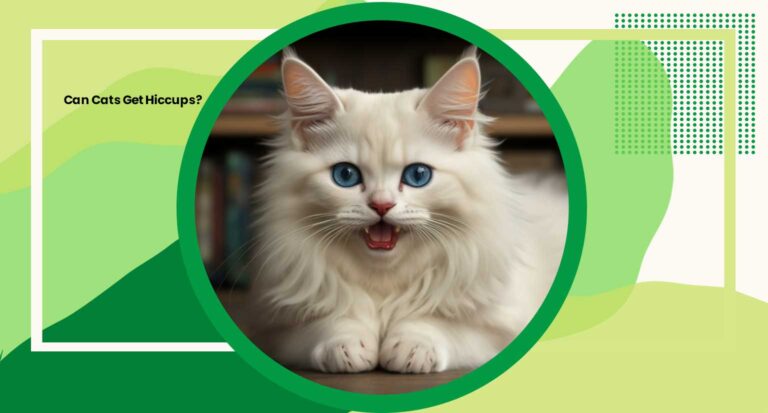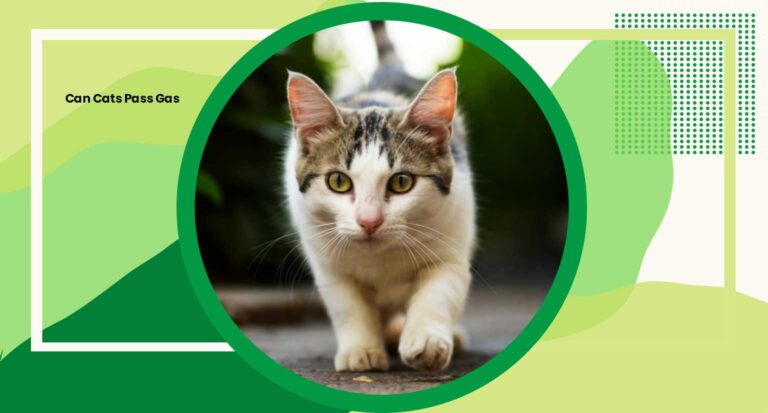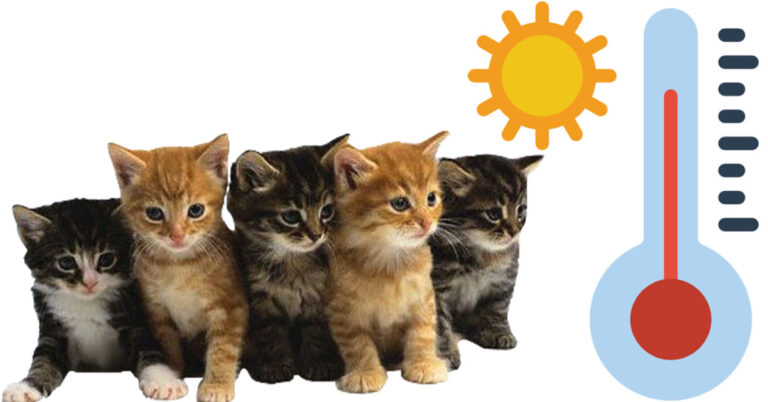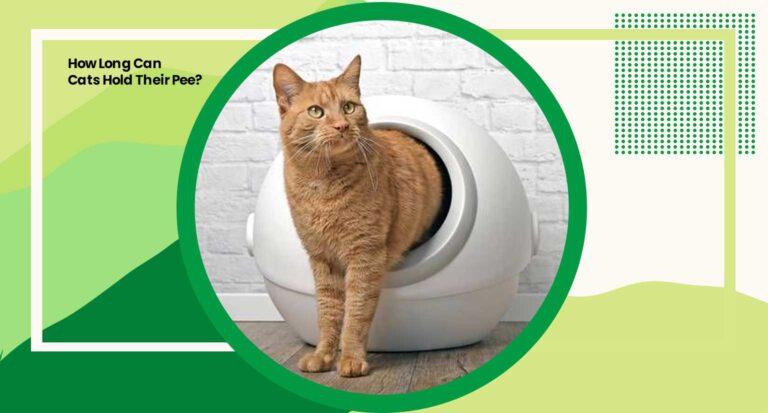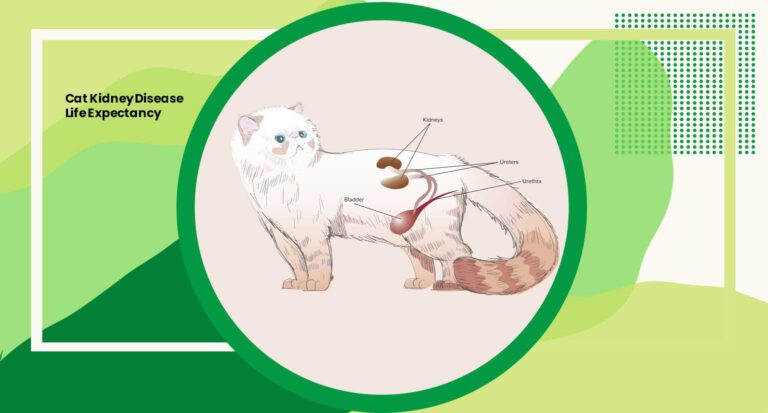Cat Liver Failure When to Euthanize
As a devoted cat owner, I know just how deeply the bond with our feline companions runs. Cats are more than just pets; they’re cherished members of our families.
However, there may come a time when we’re faced with one of the most difficult decisions a pet owner can make: Suffering from Cat liver failure when to euthanize.
In this guide, I’ll share my knowledge and insights into cat liver failure, its signs, and most importantly, the compassionate and informed approach to determining when it might be time to consider euthanasia for your beloved furry friend.
Let’s navigate this challenging journey together, with your cat’s best interests at heart.
Cat Liver Failure
Dealing with the reality of cat liver failure is a heart-wrenching experience for any cat owner. When your feline companion is facing this condition, one of the most agonizing decisions you may encounter is determining when to consider euthanasia.
In this section, I want to provide you with valuable insights into the factors and considerations that can help guide you through this emotionally challenging process.
Liver failure in cats is a serious medical condition that can manifest in various ways, affecting your cat’s overall health and quality of life.
While no one wants to think about the possibility of euthanizing their beloved pet, it’s crucial to understand the signs and circumstances that may indicate it’s the most humane option.
In the following sections, I’ll delve deeper into the signs of cat liver failure, how to assess your cat’s quality of life, and the importance of consulting with your veterinarian during this difficult time.
Reasons for Cat Liver Failure
Understanding the underlying causes of cat liver failure is crucial in recognizing and addressing this serious condition.
The liver plays a vital role in your cat’s overall health, and when it fails to function properly, it can have devastating consequences. Let’s explore some of the primary reasons why cats may develop liver failure:
Hepatic Lipidosis (Fatty Liver Disease)
This is one of the most common causes of liver failure in cats. It typically occurs when a cat experiences rapid weight loss or anorexia, leading to a buildup of fat in the liver. Hepatic lipidosis can be a result of stress, sudden dietary changes, or underlying medical conditions.
Infections
Bacterial, viral, or parasitic infections can target the liver, causing inflammation and impairing its function. Conditions like feline infectious peritonitis (FIP) and toxoplasmosis can lead to liver damage.
Toxicity
Cats are known for their curious nature, and unfortunately, they can ingest substances that are toxic to their livers. Common toxins include certain plants, medications, chemicals, and even some human foods.
Hepatitis
Inflammation of the liver, known as hepatitis, can result from various causes, including viral infections (such as feline leukemia virus), autoimmune disorders, or an unknown origin (idiopathic hepatitis).
Cancer
Liver tumors, both benign and malignant, can disrupt normal liver function. These tumors can originate in the liver itself (primary liver cancer) or spread from other parts of the body (metastatic liver cancer).
Congenital Defects
Some cats are born with congenital liver defects that may not become apparent until later in life. These defects can impair liver function and lead to liver failure.
Chronic Diseases
Cats with chronic conditions like diabetes, hyperthyroidism, or kidney disease may be at a higher risk of developing liver issues as a secondary complication.
Age and Aging
As cats grow older, their organs, including the liver, may naturally decline in function. This age-related deterioration can contribute to liver failure.
Recognizing the specific cause of liver failure in your cat is essential for appropriate diagnosis and treatment. If you suspect your cat is experiencing liver problems or displaying symptoms such as jaundice, lethargy, vomiting, or changes in appetite, consult your veterinarian promptly.
Early detection and intervention can make a significant difference in managing liver issues and improving your cat’s quality of life.
Can a Cat with a Failing Liver Live for a Long Time?
The prognosis for a cat with a failing liver can vary depending on several factors, including the underlying cause, the stage of liver disease, and the promptness of medical intervention.
While liver failure is a serious condition, it’s not always a death sentence, and some cats can live for an extended period with proper care and management. The following conditions can affect a cat’s prognosis:
Early Detection
Detecting liver issues in their early stages can significantly improve the chances of successful treatment and a longer life. Regular veterinary check-ups and prompt attention to any unusual symptoms can make a difference.
Underlying Cause
The cause of liver failure plays a crucial role in determining the outcome. For instance, if the liver disease is due to a reversible condition, such as hepatic lipidosis or a treatable infection, the prognosis may be more favorable compared to liver disease caused by cancer or irreversible damage.
Treatment Options
The treatment plan prescribed by your veterinarian can influence your cat’s longevity. Some treatment options may include dietary changes, medications, fluid therapy, and addressing the underlying cause if possible. Your vet will tailor the treatment to your cat’s specific needs.
Quality of Life
Ultimately, the goal is to ensure your cat’s quality of life. If the disease is advanced, causing significant discomfort or suffering, your veterinarian may recommend humane euthanasia to prevent unnecessary pain.
Compliance with Medical Recommendations
Following your veterinarian’s advice diligently and administering medications as prescribed is crucial. Regular follow-up visits and monitoring can help track your cat’s progress and make necessary adjustments to the treatment plan.
It’s important to understand that while some cats may live for a longer time with liver disease, there are no guarantees, and each case is unique.
Your veterinarian will provide you with the most accurate assessment of your cat’s prognosis and work with you to make the best decisions for their well-being.
Above all, your cat’s comfort and quality of life should be the top priorities. Open communication with your veterinarian and providing a loving and supportive environment can make a significant difference in your cat’s journey with liver disease.
Treatment of Liver Failure
A cat is diagnosed with liver failure, it’s essential to take prompt and comprehensive action to address the condition and improve your feline companion’s quality of life.
The treatment approach for liver failure in cats typically involves a combination of medical care, dietary management, and supportive measures. Here’s an overview of the key aspects of treatment:
- Identification and Management of the Underlying Cause: The first step in treating liver failure is identifying and addressing the root cause.
- Depending on the cause, treatment may involve medications to manage infections, control inflammation, or target underlying conditions like diabetes or hyperthyroidism.
- Nutritional Support: Cats with liver disease often have decreased appetite and may be at risk of malnutrition.
- Specialized prescription diets formulated for liver support can provide essential nutrients while reducing the workload on the liver. Your veterinarian will recommend an appropriate diet for your cat’s specific condition.
- Medications: Your veterinarian may prescribe medications to support liver function and manage symptoms.
- These may include medications to reduce ammonia levels in the bloodstream, antioxidants, and drugs to alleviate nausea or discomfort.
- Fluid Therapy: Dehydration is common in cats with liver disease. Intravenous (IV) fluids or subcutaneous (under the skin) fluids may be administered to maintain hydration and support kidney function.
- Monitoring and Follow-Up: Regular check-ups and monitoring of your cat’s progress are essential. Your veterinarian will assess liver enzyme levels and make necessary adjustments to the treatment plan. This ongoing care helps ensure that your cat is responding well to treatment.
- Managing Complications: Liver failure can lead to various complications, such as hepatic encephalopathy (neurological symptoms due to liver dysfunction). Managing these complications may involve additional medications and interventions.
- Surgical Options: In some cases, surgical procedures may be considered, particularly if there are tumors or blockages in the bile ducts. Your veterinarian will discuss the potential benefits and risks of surgery with you.
- Home Care: Providing a comfortable and stress-free environment at home is crucial. Minimize your cat’s exposure to toxins, ensure they have easy access to food and water, and administer medications as prescribed.
It’s important to note that the success of treatment for liver failure in cats can vary widely depending on the severity of the condition and the cat’s overall health.
Some cats respond well to treatment and enjoy an improved quality of life, while others may face more significant challenges.
Your veterinarian will work closely with you to develop a tailored treatment plan and provide guidance on how to care for your cat during this challenging time.
What are the First Signs of Liver Damage?
Detecting liver damage in cats early is crucial for effective treatment and maintaining their overall health.
While liver damage can manifest differently in each cat, there are common signs and symptoms to be aware of. If you observe any of the following, it’s essential to consult your veterinarian promptly:
Jaundice (Yellowing of the Skin and Eyes)
One of the most noticeable signs of liver damage is jaundice, where the cat’s skin, gums, and the white part of their eyes turn yellow.
This occurs due to the buildup of bilirubin, a yellow pigment, in the bloodstream when the liver can’t process it properly.
Changes in Appetite
Cats with liver damage may exhibit changes in their eating habits. They might lose interest in food, experience a reduced appetite, or even show signs of nausea, such as excessive drooling or vomiting.
Weight Loss
Unexplained weight loss is a common symptom of liver damage. Cats may lose weight rapidly, even if their food intake remains the same or increases.
Lethargy and Weakness
Cats with liver damage often appear lethargic and weak. They may sleep more than usual and be less active. Weakness can also manifest as difficulty jumping or climbing.
Vomiting and Diarrhea
Gastrointestinal disturbances, including vomiting and diarrhea, can occur as a result of liver damage. These symptoms may be intermittent or chronic.
Increased Thirst and Urination
Liver damage can affect a cat’s ability to regulate fluids in the body. This can lead to increased thirst and urination, potentially resulting in more frequent trips to the litter box.
Behavioral Changes
Cats may exhibit changes in behavior, such as increased irritability or aggression. They might also become more withdrawn and less social.
Abdominal Pain
Cats with liver issues may experience discomfort or pain in the abdominal area. This can manifest as a hunched posture or sensitivity when the abdomen is touched.
Neurological Symptoms
In severe cases, liver damage can lead to neurological symptoms, such as disorientation, seizures, or circling.
It’s important to note that the signs of liver damage can overlap with other health conditions, making a definitive diagnosis challenging without veterinary evaluation.
Early detection and intervention can significantly improve the prognosis for cats with liver damage. Timely treatment and supportive care can help manage the condition and enhance your cat’s quality of life.
Conclusion
In the world of pet ownership, few challenges are as emotionally taxing as dealing with a cat’s liver failure and the difficult decisions it may entail.
Liver failure in cats is undoubtedly a serious and often heartbreaking condition, there is hope and support available.
The journey may be filled with challenges, but it’s also an opportunity to demonstrate the deep bond and unwavering love you share with your cat.
Your dedication and love for your cat will guide you on this challenging path. Whether your cat’s journey is short or extended, the bond you share and the care you provide are testaments to the profound connection between humans and their cherished feline companions.

